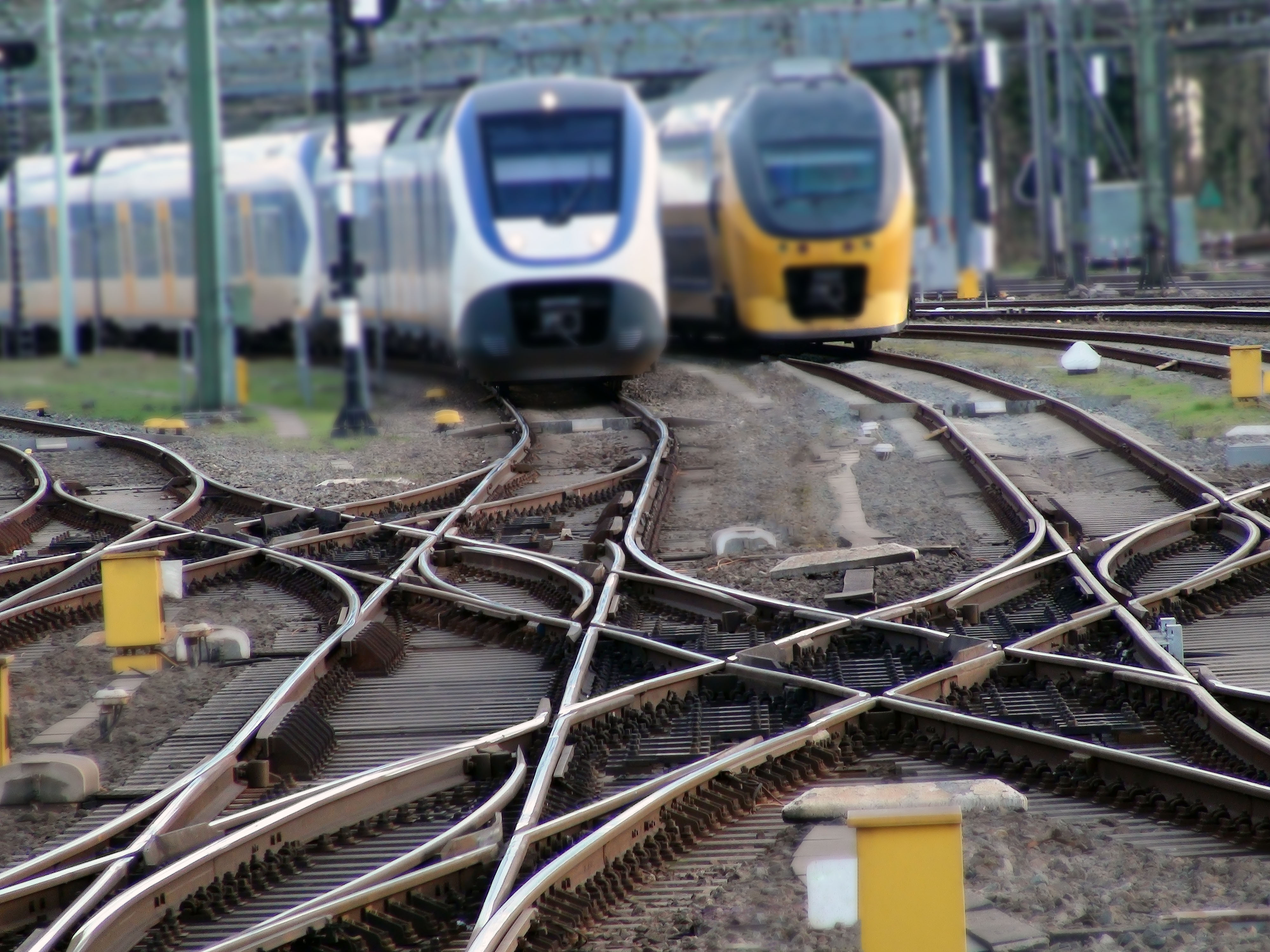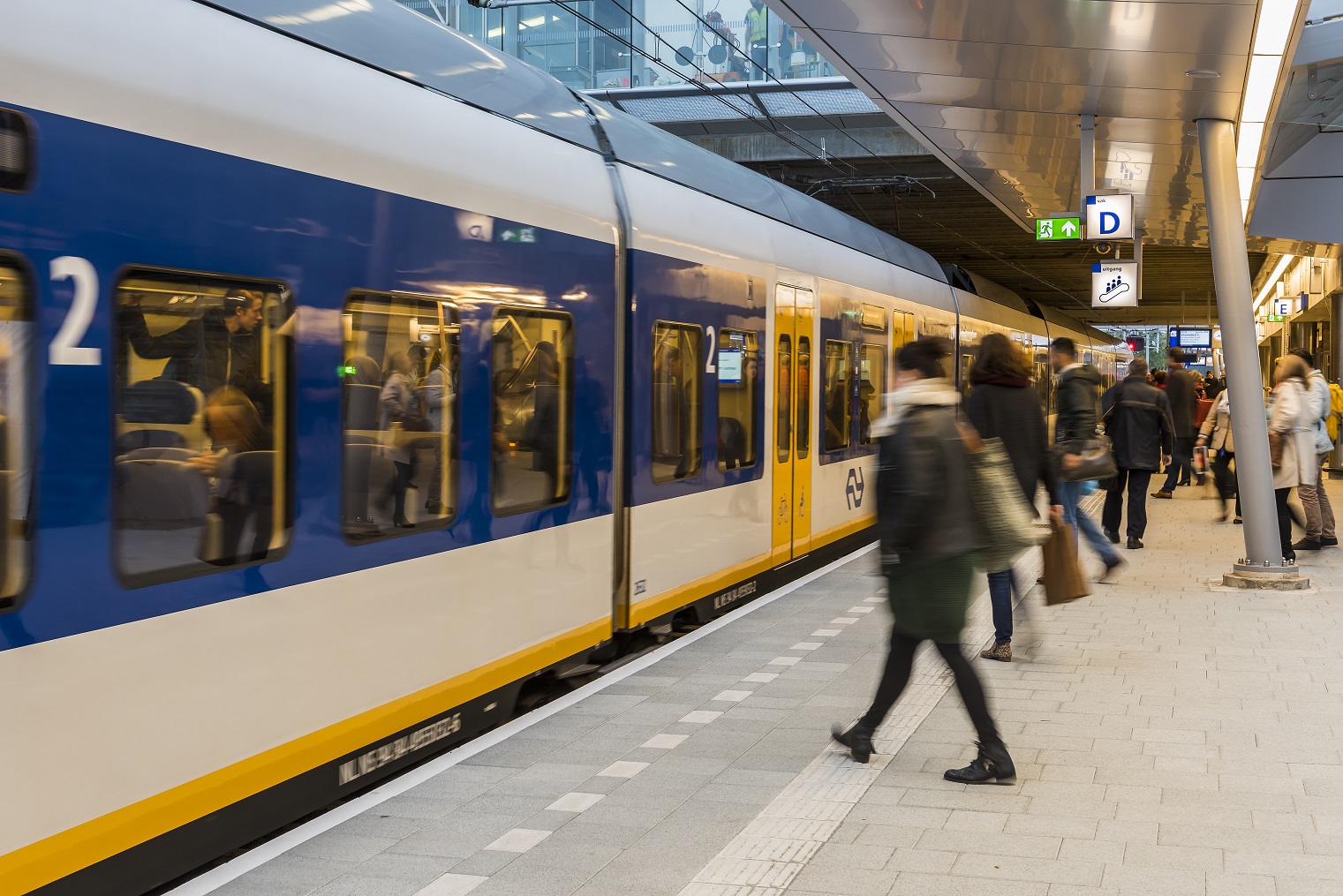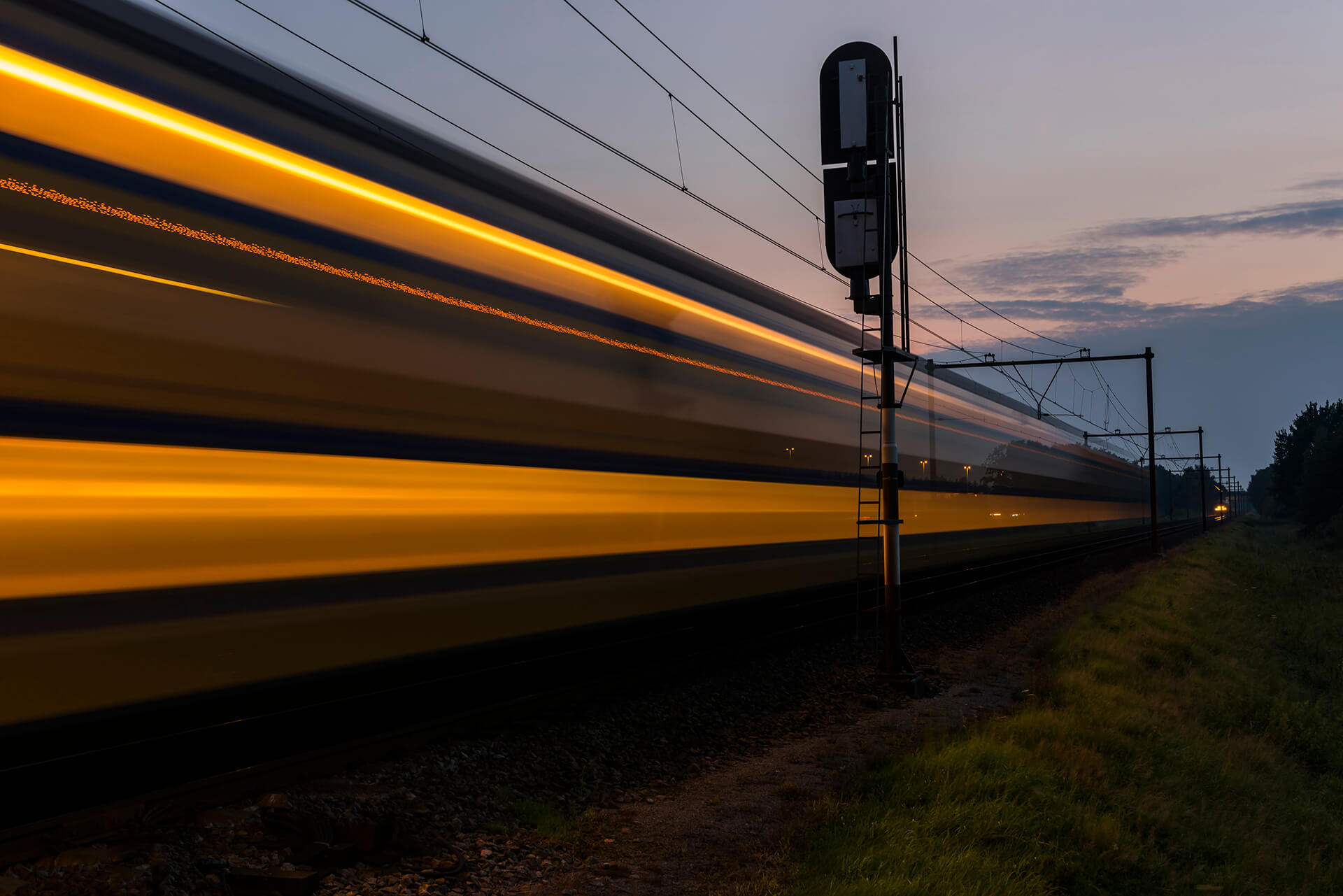
Wouldn't it be nice if train drivers were automatically advised to slow down before they encounter a red signal slightly further down the line? Or if their location and planned time of arrival could be used to tell them exactly at which point they can shift the train to neutral in order to arrive exactly on time.
If all of this were possible, trains would never have to wait for a red signal again and energy would be used optimally. The good news is that this is possible, and to realise the required solution, ProRail now provides public transporters with the right data in SFERA format.
Routelint
Routelint was developed early this century to provide train drivers with more context so they could anticipate the situation ahead on the track. Routelint is a schematic representation of the tracks ahead of a driver. The application has been updated and improved over the years, but what has not changed is the data interface between the ProRail systems and the systems at NS (Dutch Railways). While this interface contains the data to visualise the current situation on the tracks, it does not contain the data that is needed to give advice on punctual and energy-efficient trains. However, this is what is required.
SFERA standard for wider use of dataset
Turning data into advice requires a huge amount of data from a range of systems. Pim Sierhuis, solution architect at ProRail: "We want to ensure that ProRail can operate efficiently in the future, which means that we need to be able to easily disclose data integrally to all transport operators." This is the reason why we launched the initiative to start providing integral data to DAS systems. The European SFERA (Smart communications for Efficient Rail Activities) standard will be used for this purpose.
The SFERA standard was designed to standardise communication between infrastructure managers and transport operators. “using a standard is extremely important” says Olaf Wienk, software architect at InTraffic. "Working with a standard allows you to deploy data interfaces more widely, not only at NS but at every carrier. It removes the need for providers of Driver Advisory Systems (DAS) to develop customised software, because they can provide the same software to all public transporters."
From schematic to geographical model
Adapting the data to the requirements of the standard was relatively easy. A much bigger challenge was transforming Routelint's schematic model into a model that represented the railway geographically. The combination of a geographic model and a train’s GPS location provides transporters with more accurate information on where they are on their scheduled journey.
Wienk compares the new situation to the navigation system in a car. "A car driver can see whether there is a traffic jam further ahead and thus he can choose to shift to neutral and drive slowly behind a truck in order to save fuel. Similarly, a train driver can see that he has to wait further ahead for a red signal because another train has to pass first. If this is the case, he can decide to slow down to save energy." This information was already available to train drivers, but now ProRail provides it as a single, complete data set.
"A train driver can see that he has to wait further ahead for a red signal and if this is the case, he can decide to slow down to save energy."

Future
Naturally the two gentlemen are very proud of the new SFERA dataset, but the final goal hasn’t been reached yet. Sierhuis: "At the moment, a driver still has to interpret the information he receives, but our goal is that the DAS system will provide the driver with pro-active advice based on the real-time SFERA data. In that situation, ProRail's Traffic Management System can continuously calculate a conflict-free plan, taking into account the current situation. That plan is shared real-time with the DAS systems in the trains, which can adjust their speed advice accordingly."
The result: trains that save energy and run more precisely according to their time schedule. After all, they no longer have to brake and accelerate so often because they run at a single, constant speed. What’s more, this allows you to make more efficient use of the track.
Agile collaboration between three parties
The end of the journey hasn’t been reached yet, but the cooperation between ProRail, NS and InTraffic is bringing that ideal world closer by, step by step. A cooperation that revolves around agile working, in small iterations. The integrated SFERA data stream that ProRail now supplies to NS was also developed according to the agile method. And this is exactly how InTraffic likes to work. "The first system was a kind of trial, to show in which way we would deliver the data from now on," says Wienk. "We shared the first drafts with NS right from the start, and asked what they thought about it. Once the first working version was complete, we gradually expanded the dataset."
Wienk’s and Sierhuis’ most important advice for similar projects is: work together intensively and immerse yourself in the other's processes. Sierhuis: "The success of this SFERA initiative is that we did it together with three parties – ProRail, NS and InTraffic – from the very first moment. We immersed ourselves in each other's world and thus brought together the necessary knowledge and expertise. This is the only way to succeed in delivering datasets and software that really add value. And that is certainly the case in this project."



